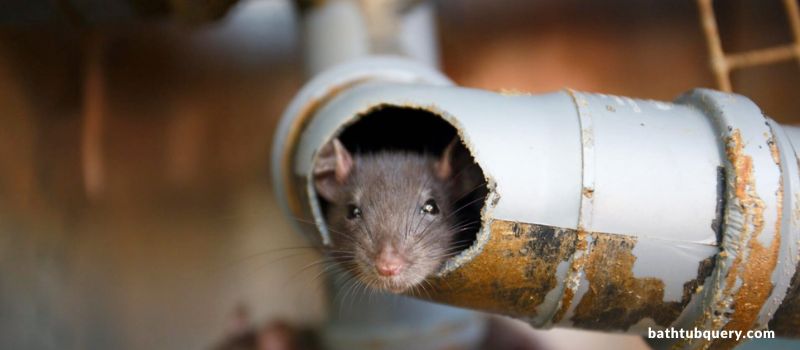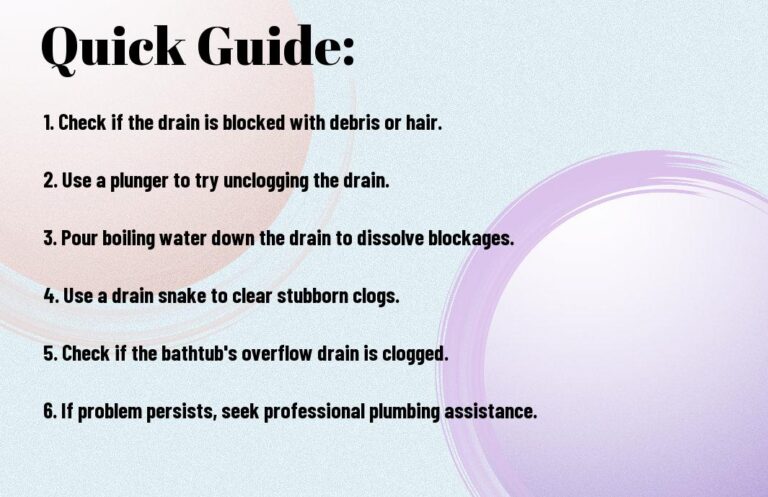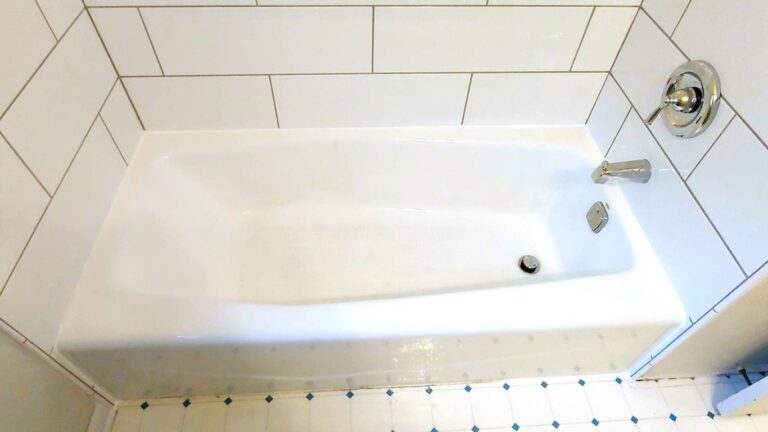Can Mice Come Up The Bathtub Drain?
Many homeowners dread the idea of unwelcome pests invading their living spaces, especially through unexpected entry points like bathtub drains. While it seems unlikely, some may wonder – can mice actually come up through the bathtub drain and into your home? Let’s take a detailed look at whether or not this phenomenon really occurs.
Do Mice Enter Homes Through Bathtub Drains?
Yes, mice can come up through bathtub drains, but it’s relatively uncommon. Since drain pipes connect to the outside, if they aren’t properly sealed, mice may be able to enter the home this way in search of food or shelter. The water barrier in p-traps normally prevents access, but tiny mice may squeeze through, especially if water levels are low.
Overall, mice tend to prefer easier access points like gaps around windows or ceilings. But bathtub and sink drains can potentially provide an entrance in some cases if not well-sealed and maintained.
However, mice are resourceful and adaptable creatures. In rare circumstances, they may attempt and even succeed in using bathtub drains as an entry point into homes in search of food, water, and shelter. This is most likely to occur if conditions allow them access and opportunity.
Why Might Mice Try to Use Bathtub Drains?
There are a few key reasons why mice might be compelled to attempt entry via a bathtub drain:

- Seeking food sources: Mice can detect food sources even through pipes and drains. Grease, soap scum, and minute food particles that get washed down the drain can attract mice looking for nourishment.
- Looking for water: Bathtub drains may provide access to water sources that mice require for survival. They only need tiny amounts of water daily.
- Seeking shelter: In cold weather or if other shelter isn’t available outdoors, mice may explore any possible entry in search of warmth, safety, and protection.
Can Mice Physically Fit Through Drains?
Mice are extremely nimble, flexible, and can flatten their bodies to fit into very tight spaces. Here are some of their physical capabilities:
- Mice can squeeze through openings as small as 1/4 inch wide.
- Standard bathtub drain pipe openings are usually 1.5 to 2 inches in diameter.
- Juvenile and young mice that are smaller may be able to fit through a drain’s p-trap.
So while it’s a very tight squeeze, mice can physically contort their bodies enough to enter drain openings under the right conditions.
Limitations of Using Bathtub Drains
While mice may attempt to use bathtub drains to enter a home, there are several limiting factors that make this difficult:
- P-traps contain water: The u-shaped curve design of p-traps serves as a barrier by holding water in the bend to block gases. Mice would have to overcome and crawl through this water to pass.
- Slick surfaces: Bathtub drain pipes and p-traps have smooth, slippery chrome or plastic surfaces. Mice would have trouble climbing up these slick, vertical surfaces.
- Easier access points outside: Since it’s such a challenging route, mice likely won’t attempt drains if there are easier access points into the home from outside.
Preventing Mice From Using Bathtub Drains
To make sure mice don’t use bathtub drains as a pathway into your home, there are some prevention measures you can take:

Keep Drains Free of Debris
- Remove any accumulations of hair, grease, soap scum, food particles, or other debris that may attract mice to the drain .
- Use drain catchers and covers to prevent debris from accumulating in drains.
Maintain Functioning P-Traps
- Ensure p-traps under sinks and tubs hold water to block mice’s access.
- Fix any leaks or cracks in the p-trap or piping that could drain the water barrier.
Seal Any Pipe Openings
- Use caulk, steel wool, or other materials to seal any openings around drains or pipes where they meet walls or surfaces.
- This prevents mice from using these openings to enter the drain system from outdoors.
Monitor for Signs of Mice
- Place non-toxic glue boards or traps near drains to catch any mice using the area.
- Look for droppings, gnaw marks on pipes, or grease marks that may indicate mice activity near drains.
Getting Rid of Mice in Drains
If you discover that mice have already gained entry to your home through the bathtub drain, you’ll need to take action to get rid of them and prevent further infestations. Here are some options:
- Use a plunger: Place the plunger over the drain and plunge vigorously several times. This can create suction and pressure that may force mice out of the drain.
- Flush with boiling water or diluted bleach: Pouring boiling water or a diluted bleach solution down the drain can irritate, flush out, or eliminate mice in the drain.
- Use a drain snake: A plastic or metal drain snake can be used to physically irritate mice and prod them to exit out the drain entry point.
- Contact pest control: For severe infestations, contact a professional exterminator. They have access to methods and treatments to effectively eliminate mice.
FAQS
Can a mouse come up through the bathtub drain?
Mice can physically fit through drain pipes, but bathtub drains are rarely used as entry points due to water barriers and slippery surfaces. Juvenile mice may occasionally succeed in climbing up.
What attracts mice to bathtub drains?
Mice can detect minute food particles, grease, soap scum that get washed down drains. They may also be attracted to water sources or shelter.
How do you know if a mouse came up the bathtub drain?
Signs include droppings, grease marks near the drain, gnaw marks on pipes, or direct sightings. Place non-toxic glue traps to also catch mice near drains.
Will hot water kill mice in drains?
Extremely hot water can potentially scald and kill mice in drains. However, boiling water is more effective for flushing mice out of drains.
Can mice go through P traps?
P traps normally block mice with their water barrier. But cracks or leaks that drain the water, or very small young mice, may be able to squeeze through the trap.
Conclusion
While it’s statistically unlikely, mice may occasionally gain entry into homes through bathtub drains if conditions allow them access. With proper prevention tactics like keeping drains clean and sealed, monitoring for signs of mice, and acting quickly at the first sign of infringement, homeowners can avoid bathtub drain mice infestations. Remember, an ounce of prevention is worth a pound of cure when it comes to pesky mice!
Read more:
- Does A Bathtub Need A Vent? Answering a Common Plumbing Question
- Can You Change the Drain on a Bathtub?
- How Does a Bathtub Drain Work?
- What Size P-Trap For Bathtub?

William J. Bullock is a licensed plumber with over 15 years of experience installing and repairing bathtubs. He runs his own plumbing company in Greenville and serves residential and commercial clients. William is dedicated to providing honest, transparent advice to help homeowners make informed decisions about their bathroom renovations.
He has established expertise in selecting bathtubs, planning custom installations, diagnosing issues, and completing repairs. William aims to share practical tips and reliable recommendations based on extensive hands-on work. When he isn’t on a job site, William enjoys spending time with his family and volunteering at local community events. He takes pride in delivering quality service and enjoys helping people upgrade their homes.







